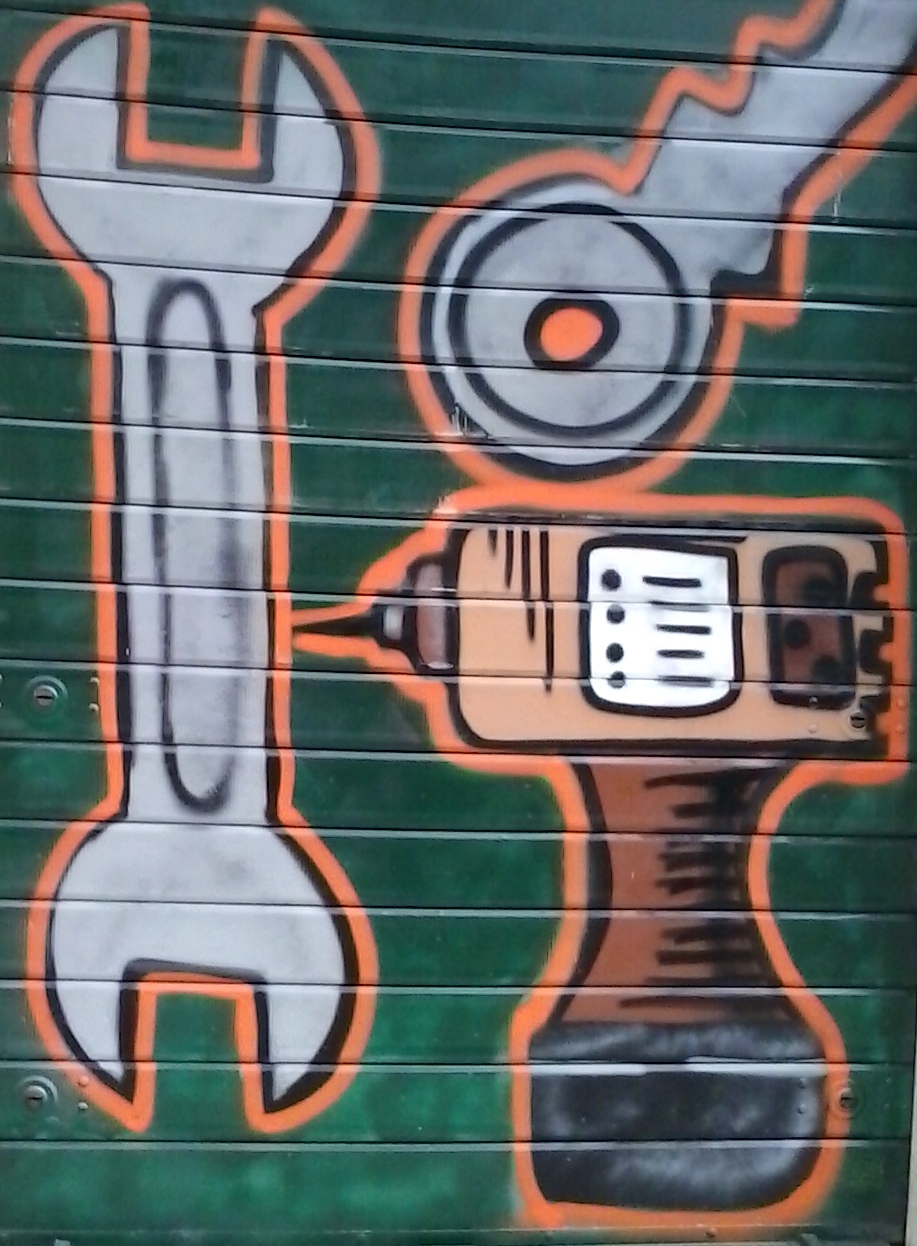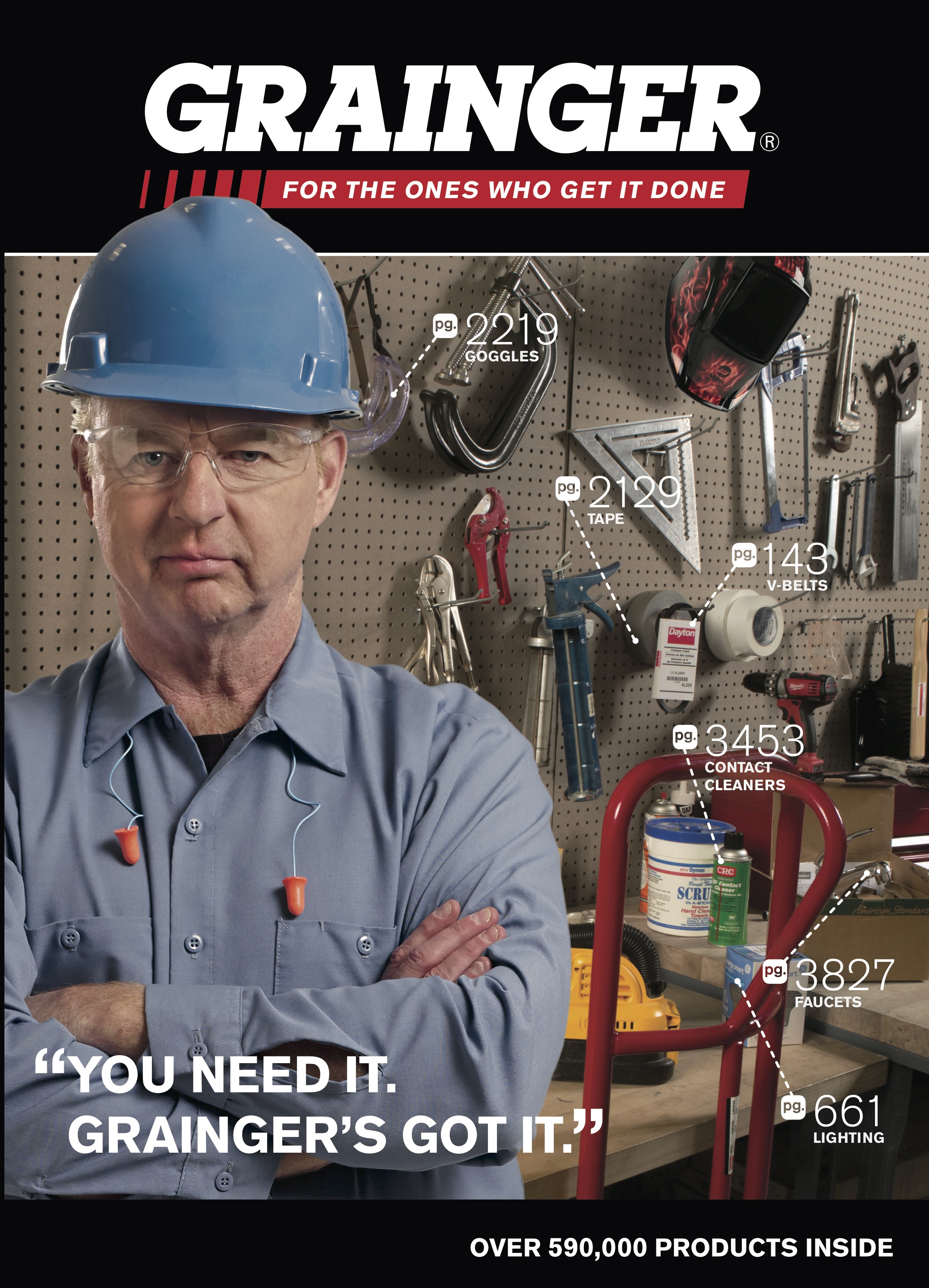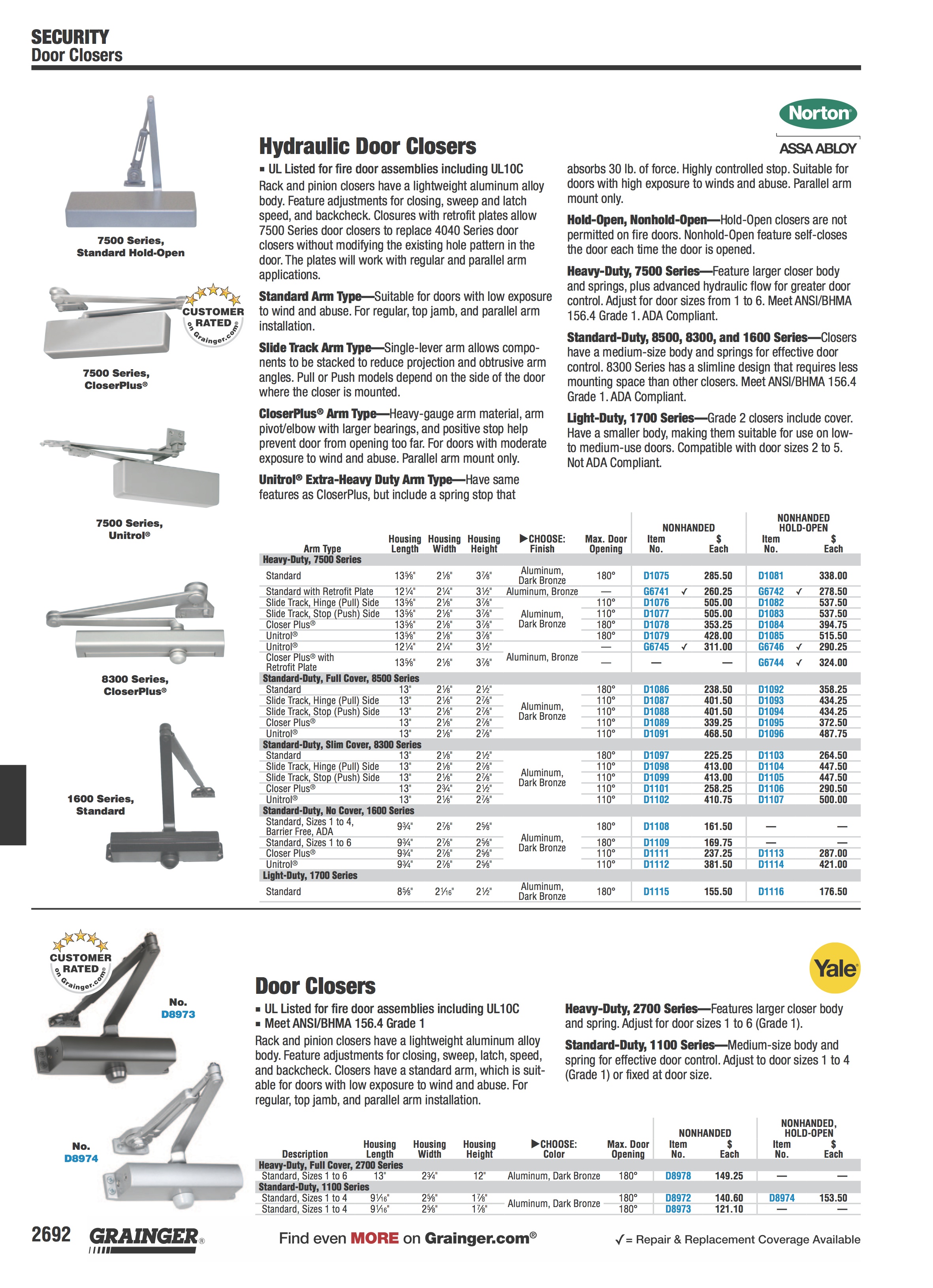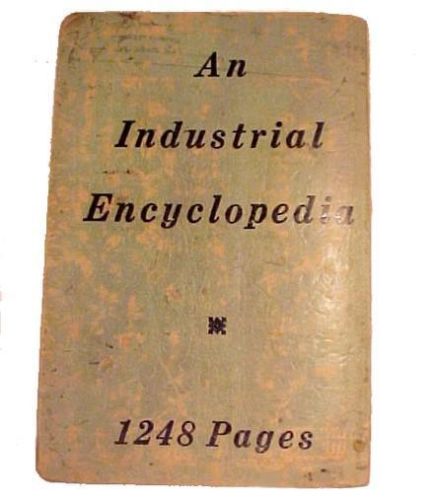The hidden poetry of industrial-supply catalogs.

Photo: Nicholas Gemini
When I was nine or ten, riding in the backseat of my mom’s car as we drove the gauntlet of strip malls, car dealerships, big-box stores, and fast-food franchises that constituted our suburb’s commercial district, I realized that all of the tall signs and buildings had been constructed and erected by actual people, different crews of people. I thought about all the Burger King and Mattress Discounters signs in the world, how each had been shipped from somewhere, delivered to someone, received, assembled, mounted, electrified. I attributed a lot of power and reach to corporations, especially those that advertised on TV, and to understand that they comprised real people was something of an epiphany—especially in suburbia, where corporate authority rests in the illusion that no human labor has gone into transforming and homogenizing the landscape. All the stores were just there. What else could there be?
That moment is part of what informs my fascination with
the Grainger catalog, a massive, 4,322-plus page industrial-supply inventory with which I first became acquainted last year, when a friend gave it to me for my birthday. Released annually on February 1, it’s an omnibus of 590,000 products—power tools, fasteners, pneumatics, hydraulics, pumps, raw materials, janitorial necessities, HVAC and refrigeration components—a work of pure utility, designed, honed, and focus-grouped to provide ready access to its most arcane sections. I can’t get enough of it. For the uninitiated, it provides a glimpse at the invisible infrastructure girding the world of construction, maintenance, repair, and operations. Grainger’s aggressively salt-of-the-earth slogan is “For the Ones Who Get It Done,” and the joy of perusing its catalog is in seeing how very many things there are to get done, and how many ways we have of doing them.
And so I often reach for it in pursuit of a kind of materialist awe. It makes for a reading experience more engaging, imaginative, and informative than almost anything that passes as literature. I’ve put down novels to pick up the Grainger catalog, which holds court on my coffee table and which could, in a pinch, serve as a coffee table unto itself.
Grainger sells mail-room organizers, carpet deodorizers, hairnet dispensers, and gutter-deicing cables. They sell a three-stage, heavy-traffic floor-matting system designed to entrap heavy debris. They sell miniature high-precision stainless-steel ball bearings with extended inner rings. They sell 550-foot rolls of foam for protecting electronics and an oil-filtration system for high-viscosity fluids. Their catalog contains a proliferation of heavily modified nouns that denote things I never knew existed, or things I’d intuited to exist, but had never really considered.
Metalized polyester film tape.
GMP/GLP data output moisture analyzers.
Electrostatic dissipative (ESD) gloves.
Cup point alloy steel socket set screws.

Catalog #405
In the specificity of its language, the catalog summons a rigorously taxonomic legion of hardware and stuff, the matter from which cities and roads are composed, the contrivances that keep machines running and power flowing and ventilators ventilating. It puts a real gleam on human ingenuity. We made these things. They’re everywhere. Spend enough time poring over the catalog and it begins to color your world; you’ll close it and walk to the refrigerator only to find yourself marveling at the hinges, screws, grilles, handles, nozzles, toggles, crisper drawers, and various constituents of the appliance instead of getting a beer. Who needs a beer? You could own a wide selection of pneumatic solenoid air valves.
Or push/pull paddle tubular locksets.
NIOSH-approved ISCBA industrial SCBAs.
Wall-switch occupancy sensors.
NSF-listed plate casters.
Then there are the item descriptions. If “For sale: baby shoes, never worn” counts as a story, then so, too, must “all-wood coffins store flat and assemble without tools. Can be stacked 3-high when assembled to maximize space in mass-casualty emergencies.” Or: “High-visibility warning whips alert other vehicles of your presence.” Or: “Stretch knit material covers head to protect from overspray.”
Arguably literature’s basic charge is to describe being in the world—the Grainger catalog reveals just how extensively our writers have failed to document the varieties of work happening now, and the hyper-precise terminology surrounding that work. Poetry and prose are some of the few venues for a culture to examine its language; in a sense, the bulk of our poetry and prose is marked by a paucity of information.
Granted, a novel full of phrases like “light- to medium-traffic dry-area antifatigue matting” wouldn’t make for a terribly lively read—if someone were to publish a hyperrealist story in which a plumber solves a complicated problem with a schedule-eighty polypropylene socket-fused fitting, I alone might find merit in it. But look at writers like Wallace, whose fascination with neologisms captures the sea change that technology has brought to bear on how we communicate; or Leyner, with his satirical slumgullion of pharmaceutical jargon and high-impact ad copy; or DeLillo, whose “Human Moments in World War III” declares, “The thing science does best is name the features of the world.” There’s room for potent work that wrestles with the flux and expansion of our syntax.
I want the Great American Static-Resistant Sorbent Novel.
Two-in-one squeegee pushbrooms.
Negative-rake carbine turning inserts.
Flange-mount disconnect enclosures.
* * *

A sample page from the latest Grainger catalog.
Grainger was founded in 1927 by William Wallace Grainger, a Chicago electrical engineer who sold hard-to-find motors out of the back of his station wagon. His first catalog was eight pages. He called it the MotorBook.
Deb Oler—vice president and general manager, Grainger Brand—was kind enough to indulge my obsession with the catalog, which she proclaimed “the largest printed book in the world.”
“We can’t actually make it any bigger,” Oler told me. “We spent a huge amount of time working with the people who make our paper to make it as thin as it can possibly be while still holding up for a really long period of time. We always think, What are things we can do to get more space? But we can’t bind any bigger than we bind now.”
Its distribution is two and a half million. Only two printers in the world have the technology to produce it. The ultra-lightweight paper—that’s the technical term—is so tissue thin that a Bible’s looks lavish in comparison. The entire project comes down to a “team of thirty, a very tenured group of people,” and of these, only eight are dedicated to copyediting—no mean feat, given that in my many hours with the catalog I’ve discovered only one typo.
Compiling a book of this size poses obvious editorial challenges. For one: What goes in, what stays out? Oler said, “We have hard hats that have every football team in America’s logo on them. Do we need to show all of those, or can we show a representative sample? Will people’s feelings be hurt because their team isn’t there?”
And what do you call things, how do you file them? Drinking fountains, for instance, which Grainger sells, are known in various parts of the nation as water fountains, bubblers, or coolers. There are trash cans and then there are waste receptacles and garbage bins. All of this occasions impassioned semantic debate. The deep, quasi-Teutonic satisfaction of the Grainger catalog is that everything, finally, has been named. Everything has been indexed and put where it belongs.
Diamond-knurled press inserts.
Self-sealing pan-head machine screws.
Octal-base specialty voltage relays.
“We spend time watching people use the catalog in native situations,” Oler said. “We time how long it takes to find things. We time what happens when we take things out or put new things in.”
There are those who would object to the waste of a printed volume like this. No matter how responsibly its paper is sourced—Oler made mention of the Forest Stewardship Council—it’s still a cumbersome, tree-hungry tome. But there are few books whose design and function make such a convincing argument for their existence in print. The Grainger catalog has colored indices at its center, where the book stays open and its pages can be flipped more easily with one hand. It has a durable spine and a series of black bands running down its edge to designate different sections.
“When the customer shows up, they have a problem,” Oler said. “Either something isn’t working or isn’t going to work.” The catalog is one of the few reference texts around whose print iteration is more efficient than its digital counterpart. You look in it to find things and you find them. It is, itself, a tool, designed to provide “the right amount of information to make a decision quickly.”

The back of a 1935 McMaster-Carr catalog.
Of course, though it’s nearest to my heart, the Grainger catalog is not the only one of its kind. There’s also the
McMaster-Carr, whose distinctive yellow cover and limited print runs make it especially coveted by industrial-supply fetishists: the backsides of early twentieth-century editions bore the label “An Industrial Encyclopedia.” There’s Fastenal, which calls its catalog “
Big Blue,” and MSC Industrial Direct, which puts out “
The Big Book”—names that suggest the engulfing totality of this enterprise. Above all, an industrial supplier strives to be comprehensive. What’s seductive about these catalogs is the promise of a certain exhaustive quality, a list so meticulous as to seem interminable. “Our customers have told us time and again,” Deb Oler said, “I want to be able to come to you for everything.”
Such as solar-powered automatic gable-mount attic ventilators.
Ultrasonic wall-thickness gages.
Expandable gravity skate-wheel conveyors.
“Our customers are the people that sit in the background of every business,” Oler told me. “You don’t think about your light bulbs until they’re off. You don’t care about the toilet or the sink until it doesn’t work. The people who are our customers … they’re MacGyvers. They see themselves as problem solvers, and they are. If you look at any building and the people who work in it, there are literally thousands of products that you would need to keep that building operating.”
Even so, their best-selling product, Oler said, is probably toilet paper.









